Flight Patterns
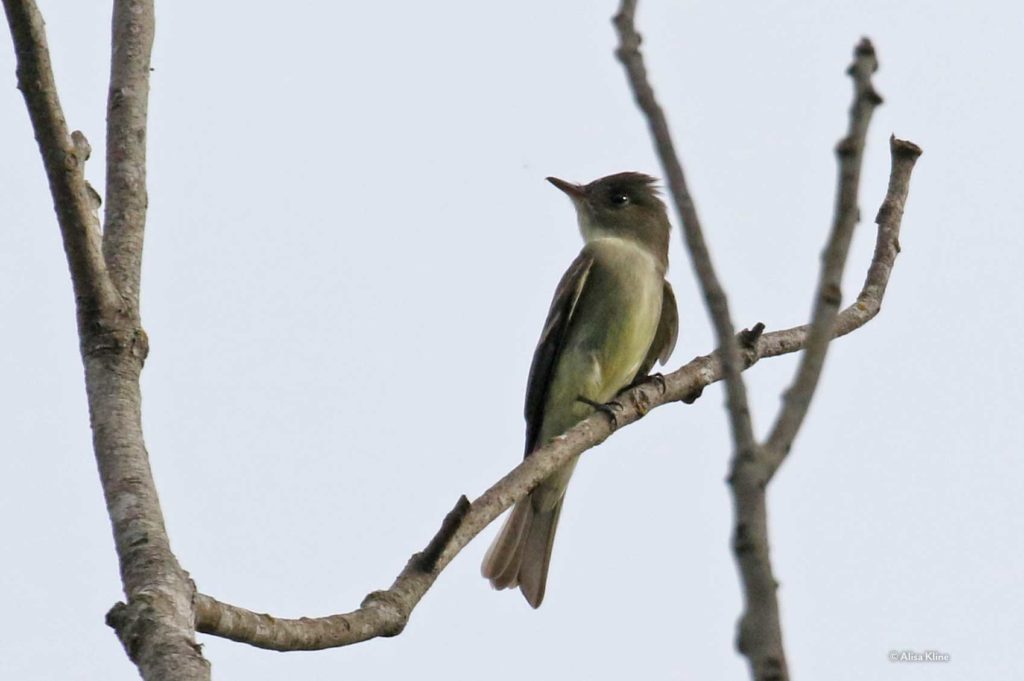
Flycatchers sew buttons.
Their flight pattern is so distinctive that you often know it’s a flycatcher before you have seen a single field mark. Flycatchers sit on a perch, usually high up, with a commanding view. They take flight abruptly, flying up, up, up and then back down to the same perch or one very nearby.
It is the same motion you make when sewing on a button. You poke the needle through from below the hole and pull your hand high to get the thread through and then down you go to stick the needle in again.
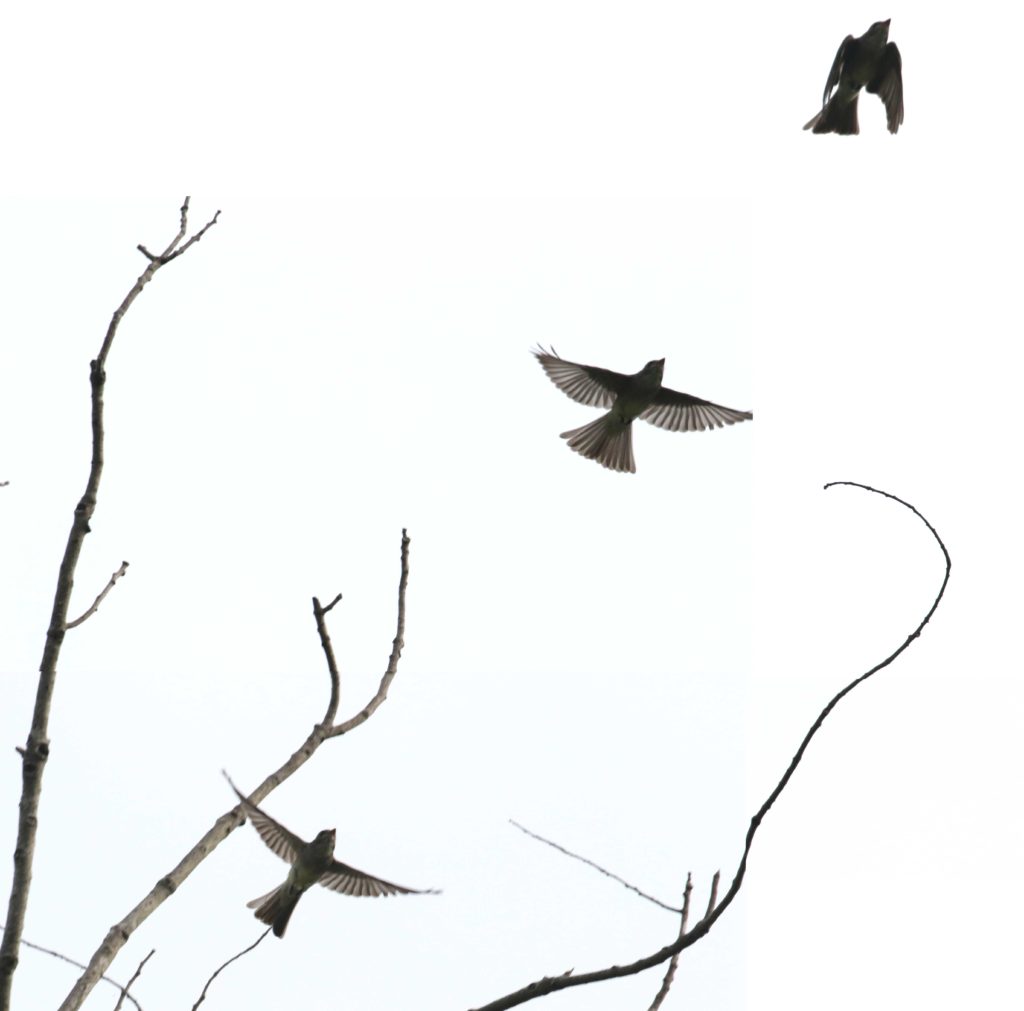
A series of three quick photos (shooting at 1/600) superimposed upon one another shows the quick and powerful takeoff of our flycatcher.
Once you notice a flycatcher at work, you can check that spot again and often find the bird there again. There are a finite number of excellent spots from which to locate and snatch insects out of the air. A flycatcher with a good spot will continue to use it, often year after year.
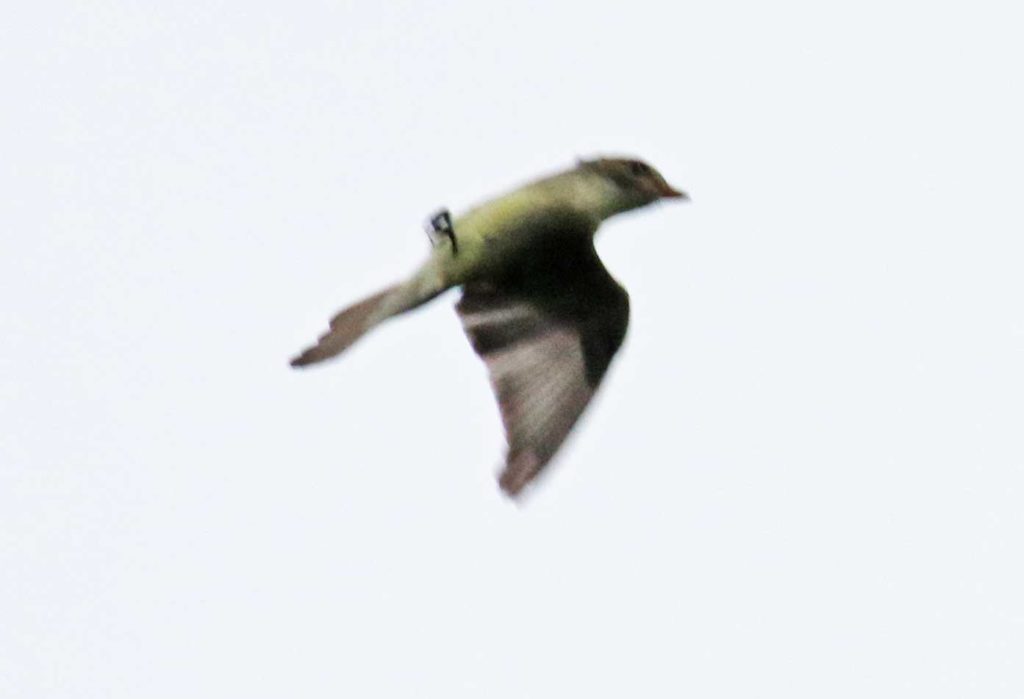
Sorry about the poor quality of this photo, but I had to share it. This pewee is completely inverted. Those are legs sticking up and the tail is upside down. The head, however, remains focused on what’s ahead. They are quick and agile fliers. Just like the insects they hunt.
It was by noticing the light pattern in the distance that I realized I had a flycatcher around the house and the third time I saw her at the same tree doing the same aerial display, I figured there would be a fourth.
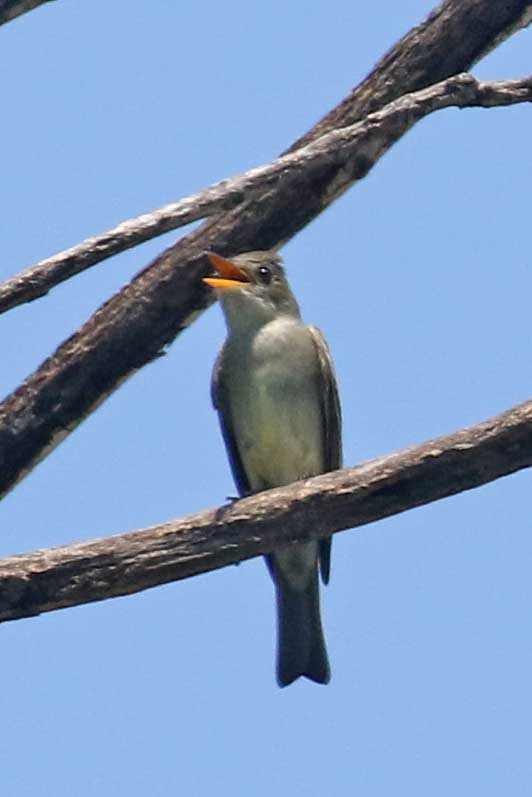
The lower red bill is a field mark that helps identify eastern wood pewees. But this dazzling orange is over the top. A combination of the open beak and bright sun made that orange really stand out.
When I saw her again on that tree, I got my camera and took some photos. Notice that I didn’t grab my binoculars. Flycatchers look a lot alike. Really a lot alike. You often cannot tell one of them from the other.
For this post, I googled how to identify flycatchers in case my memory of the situation was faulty. Nope. Thespruce.com pretty well summed it up:
To identify flycatchers, it is best to have multiple field guides to study. Different guides allow birders to cross-reference multiple experts against their own observations to reach a conclusion about a bird’s identity. Having both photography-based and illustration-based field guides can be useful, and guides should also discuss juvenile plumages, range maps, and other helpful information.
In other words, best of luck.
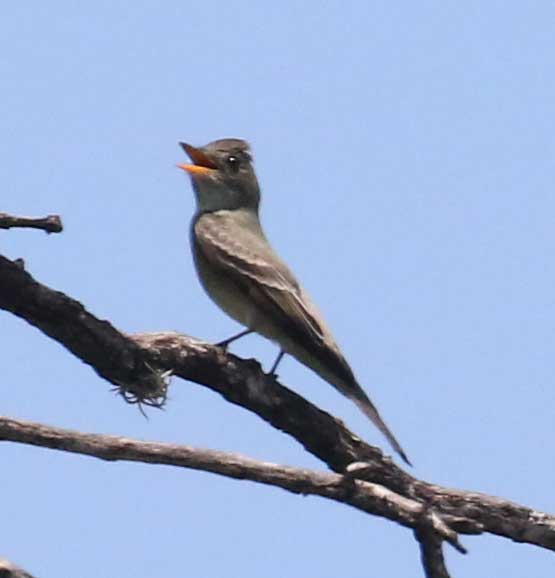
Pewees, like many flycatchers, have an adorable ruffled crest that isn’t always on display.
People who can identify flycatchers usually do so by song. Flycatchers sing and call differently from one another.
There are exceptions to this unidentifiable-flycatcher problem and I got lucky; this turned out to be an easy one – an eastern wood pewee. They look just different enough to be identified. In the photo above, you can see a somewhat exaggerated view of one of those features. Eastern wood pewees have an orange lower bill. This isn’t usually so amazingly noticeable, but this was taken on a hot day and the bird had its mouth hung open, thermoregulating. I wish it had been opened in song, but that is sort of unlikely.
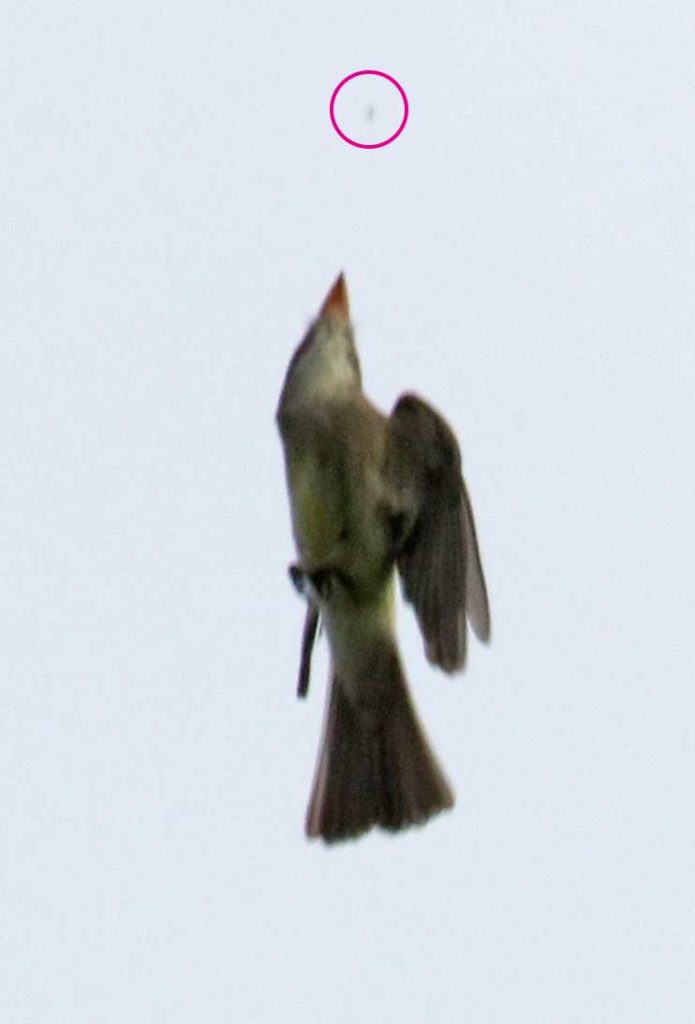
Sorry, again, for the poor photo quality, but you can still make out the fierce focus as the pewee zeros in on that smudge I circled. I imagine I caught the last moments of that insect’s life.
Pewees, like most flycatchers, sing only on their breeding grounds. Pewees migrate through here, but usually don’t stay. We are just south of their breeding range, which extends up the entire eastern half of the country starting at about Austin, so, maybe? The bird has been hanging around for four days.
Pewees named themselves. When you hear one calling, it will say pee-wee in a kind of slurred sequence. Another common flycatcher, and one we have in the Park, is a phoebe, also named because that is what it says.

